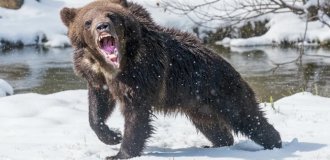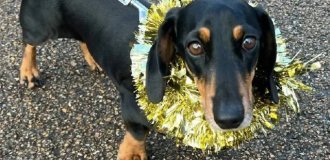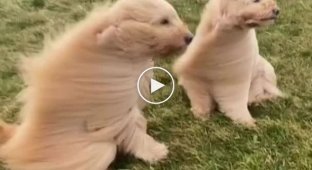Who are wolfhounds and how do they do their job? Nowadays, most dogs are bred for one purpose - to please our loved ones with pugs. But just a couple of centuries ago, some breeds not only defended the human economy, but also fought against its main enemy - the wolf. What breeds can still fight the gray robber and win? 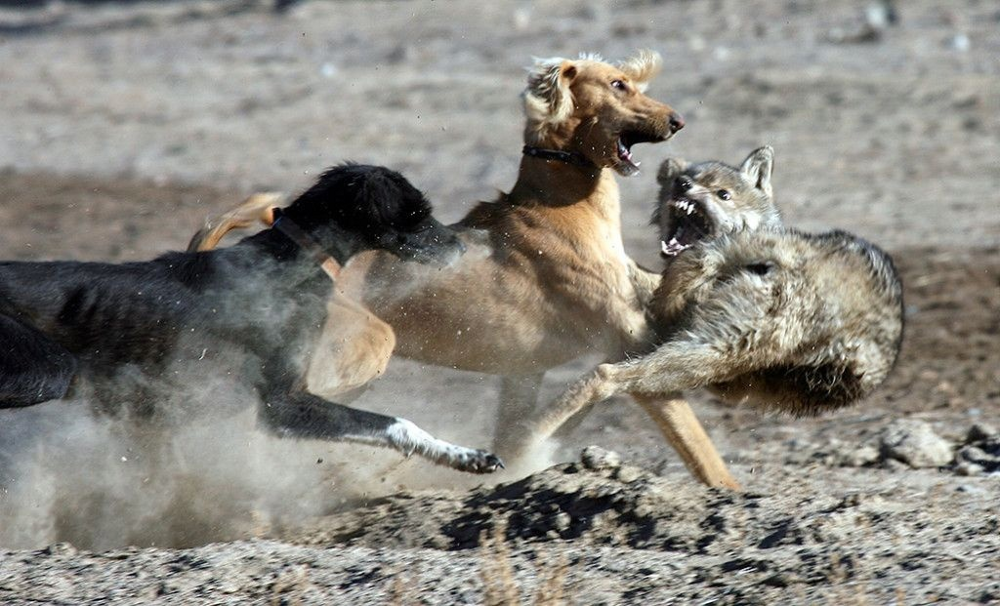
Where are you cutting?! They didn’t teach you to turn on the turn signals?!
Breeds bred to fight wolves are called wolfhounds.
All of them can be divided into two categories - defenders and hunters.
They have different working styles. And they also cope with the wolf in their own way. 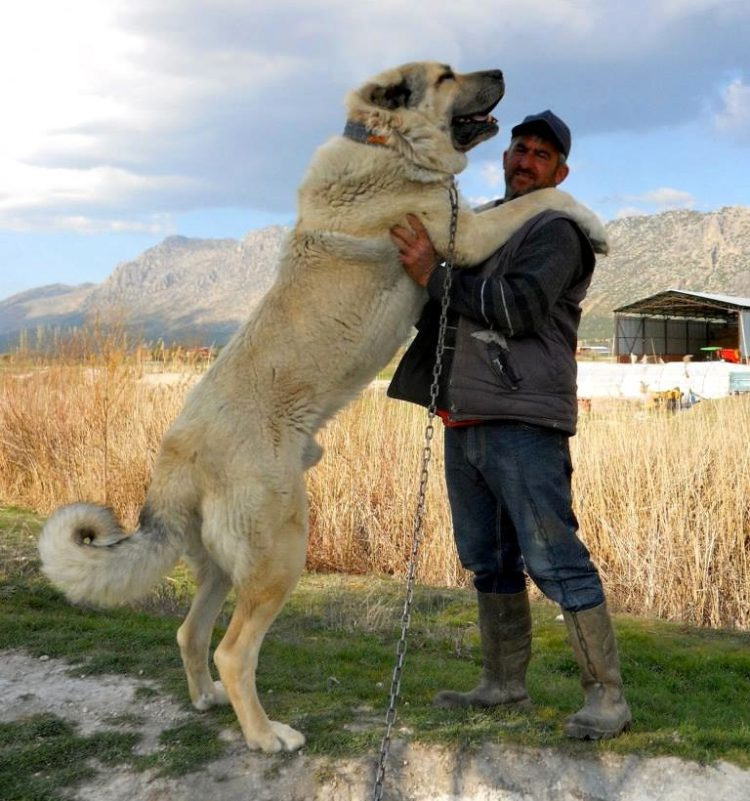
Even tough wolfhounds sometimes want to be held!
Guardians are all breeds of dogs bred specifically to protect herds of animals. Central Asian Alabai, Turkish Kangals, Kazakh Tobets, Armenian Gampras, Buryat Khotosho, Kyrgyz Debets, Georgian Nagazis and many others - these are examples of real defenders.
They all have common appearance features: a fairly large height of over 65 centimeters at the withers and a massive build.
Such watchdogs can weigh over 100 kilograms! 
This is not just a stylish punk rock decoration. This collar protects the dog's throat from a wolf bite.
But you will never see an epic one-on-one confrontation between a canine giant and a wild predator.
Despite their impressive size, all wolfhounds work exclusively as a group.
After all, the wolf does not work alone. When it comes to conflict, the fight between the defender and the predator looks like a wall-to-wall collision.
But even a group of wolfhounds is in no hurry to immediately rush into battle. Thousands of years of selective breeding in the wild have taught dogs to value their lives. 
And if there is no collar, then the dogs have a natural defense - thick hair, rolled into tangles, prevents the predator from biting the neck.
The work of defenders begins long before the actual meeting with wolves.
Dogs constantly patrol the territory of the herd or farm, leaving their own marks. This is the first warning for predators about to attack.
Having smelled the smell of a strong pack of dogs, the animals will think several times whether it’s worth it.
If the wolves decide to attack, the dogs will meet them as expected.
Dogs go to protect, and if for this purpose they have to kill, such is life. 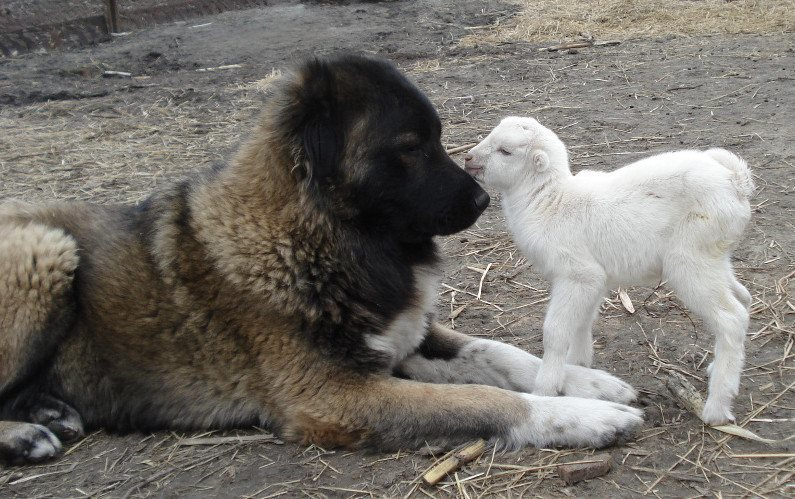
But with members of the herd, such dogs are very gentle and calm!
The second category of wolfhounds are hunters.
If the work of the defenders is based on preventing the appearance of wolves, then the hunters themselves look for meetings with the grays.
Russian greyhounds, Irish wolfhounds, Kazakh tazy, Kyrgyz tobets, all kinds of breeds of huskies and hounds can work not only on the hare. Yes, all these animals look very different, but they know their job regardless of the parameters.
To make a real wolfhound-hunter, from puppyhood the dogs are trained to smell the wolf, taught to look for tracks and pursue the animal. 
When hunting with an Irish wolfhound, the main thing is not to confuse where the wolf is and where your dog is.
Their job is to track, capture and hold the wolf until the hunter arrives.
As a rule, such schemes work with single predators or small flocks.
In such a confrontation, dogs no longer win with power and brute physical strength, but with agility, speed and quantity. 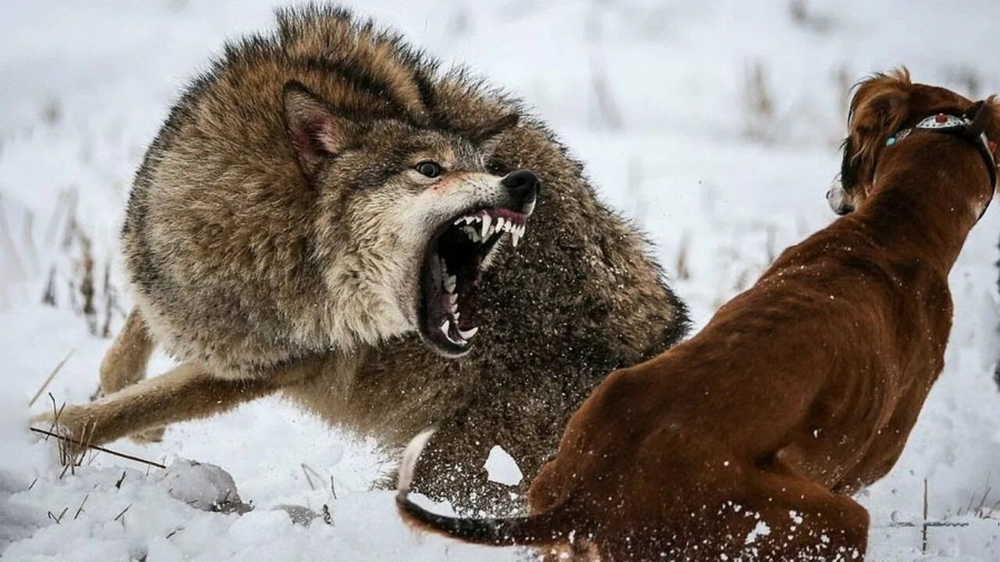
Young man, I understand that you are angry, but you would like an eight to be removed...
Hunters know that people will come for them, so they give chase without hesitation.
What is noteworthy is that such dogs enter into real fighting much less often than defenders: most of the time they bark and “harass” the animal, making false attacks, biting, and exhausting.
Killings also occur here, but usually they are committed by a person or a pack of hunters for one wolf. 
When you tortureI want to cheer up my gloomy friend.
Theoretically speaking, any of these categories of dogs can defeat a wolf. But if you look at the situation from a practical point of view and try it on in the real world, everything will not be so simple.
The current population of wolfhounds has settled on sofas and in warm enclosures, so finding a worthy representative is becoming an impossible mission.
The last wolf killers live in distant auls and villages, sitting with experienced hunters, where the animals have access to real practice. Where, from generation to generation, a dog is classified as a wolfhound breed not by long pedigree, but by real merit and victories over wolves.
A wolfhound is in the heart, not on paper.
Add your comment
You might be interested in:

